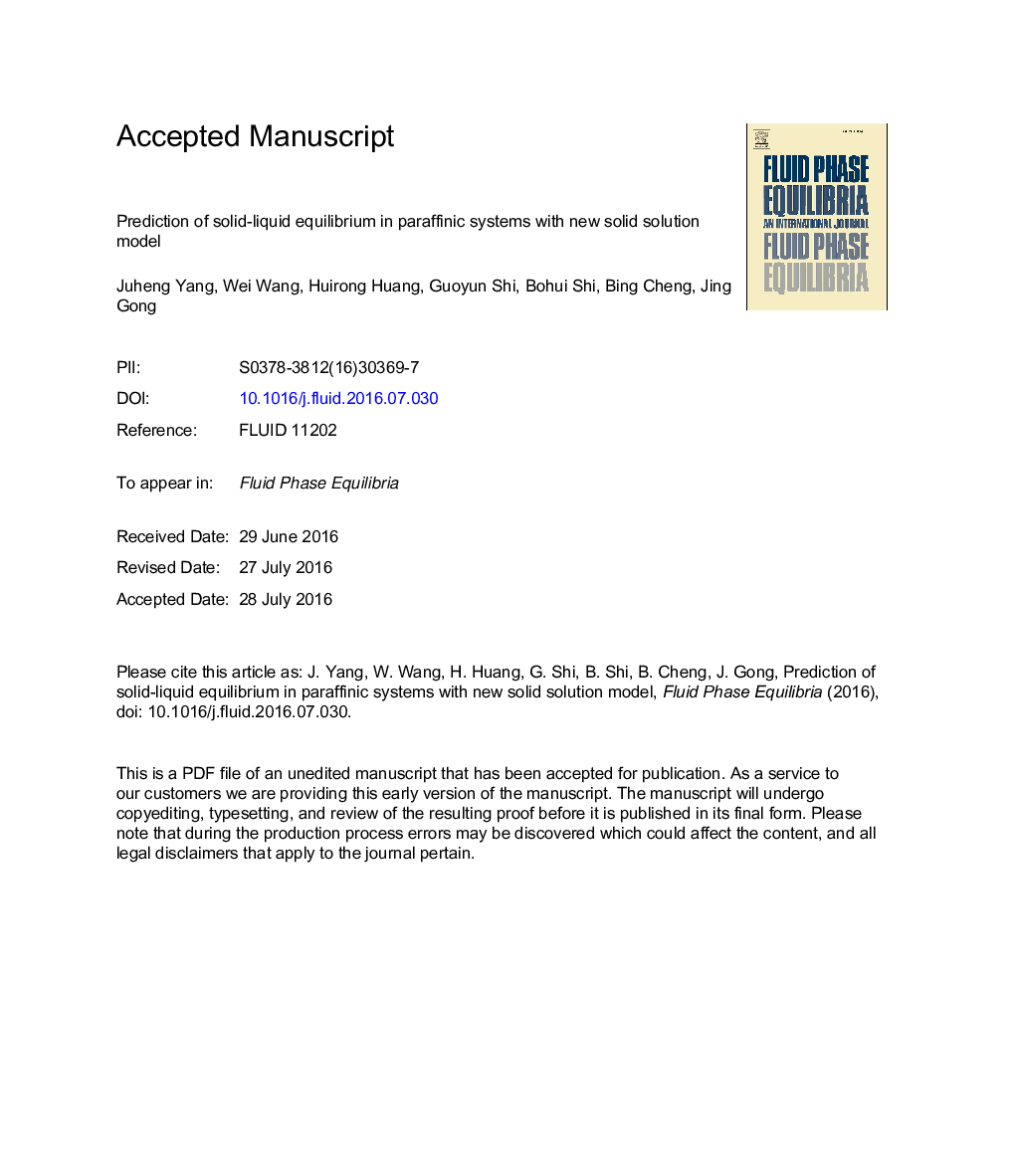| Article ID | Journal | Published Year | Pages | File Type |
|---|---|---|---|---|
| 6619461 | Fluid Phase Equilibria | 2016 | 27 Pages |
Abstract
A thermodynamic model for the prediction of wax precipitation with the new solid solution model is established. For liquid phase, regular solution model and Flory free-volume equation are adopted to consider the two contributions of activity coefficient: enthalpy contribution, the energetic interactions between the components, and entropy contribution, the differences in size and shape between the molecules. For solid phase, the derived solid solution model accounting for the two parts of the solid non-ideality is proposed, where an improved regular solution model is developed for the description of residual part (enthalpy contribution), on the basis of the combination of regular solution theory and local composition theory; while Wilson equation with the consideration of the end effects between molecules is used for combinatorial part (entropy contribution). The improved model is tested against the experimental data of binary, ternary, quaternary and multi-paraffins systems. All experimental data are obtained at atmospheric pressure with temperature varying from 260Â K to 350Â K. Results show that present model could precisely predict the experimental WATs (wax appearance temperature)/WDTs (wax disappearance temperature) and precipitation curves.
Keywords
Related Topics
Physical Sciences and Engineering
Chemical Engineering
Chemical Engineering (General)
Authors
Juheng Yang, Wei Wang, Huirong Huang, Guoyun Shi, Bohui Shi, Bing Cheng, Jing Gong,
